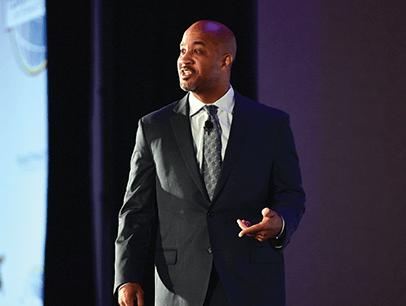
I am a Toastmaster. I am a photographer. In other words, a storyteller. The storytelling format is much different in these two art forms; however, I have recognized that the fundamental approaches stay similar whether choosing a relevant story, crafting the story with both creative and technical skills, or creating the right impact. As a storyteller, I want to share a compelling story that can touch the hearts of my audience, inspire them, and leave them with something to ponder and act on.
I pursued my interest in both public speaking and photography at the same time. In the process, I realized that the lessons learned from one area were fueling the learnings in the other in surprising ways.
Storytellers are always on the lookout for remarkable stories, figuring out simple and meaningful ways to share, and finding creative and innovative methods to present to an audience. I hope the lessons shared here will “click” with you, offer you a distinct perspective to the creative approach, and help you become a better storyteller.
1 Focus on the Main Subject
In a picture or a story, everything revolves around the main subject. If the audience is not able to visually identify the main subject from the story, the message will be blurred, and the story will lose its purpose.
A picture has three main components: the foreground, the main subject, and the background. Similarly, a story has a beginning, a main body, and a conclusion. Even though the main subject is the focus, all the other relevant elements need to be weaved together to build something beautiful and powerful.
It is a matter of finding the perfect balance. That sweet spot.

You can see a young couple (main subject) enjoying a beautiful evening in this picture. I deliberately chose a wide-angle lens to capture the foreground, middle ground, and the background instead of just focusing on the couple. In the picture, the sunset elevates the romantic quotient, and the majestic Grand Canyon scenery pushes the envelope further and makes it more surreal. Every element in the frame is working together to tell their story.
2 Stick to the Narrative
A photographer is always confronted with the question of what to include or exclude in a scene. They may resort to changing perspective, blurring the background, etc., to remove unwanted elements.
In the same vein, a storyteller is also overwhelmed when there is so much to say, in a limited time. I have found that many times it is extremely difficult to let go of some ideas that made it to the initial drafts.
The rule of thumb is to include only those elements that are playing a role in the narrative of the story. Everything else is clutter and can be removed.

While I was strolling with my family on a beach nearby by my hometown in Kerala, India, I saw this beautiful scene of a man gazing at the sea. However, the sand in the foreground was cluttered with debris, and there were multiple boats on the right side putting a damper on the scene. I made a creative decision to take the picture and then remove the clutters later using Photoshop. That is when the story became leaner, clearer, and picture became more alive.
3 Sometimes, Less is More!
Further expanding on the concept of removing clutter, keeping a minimal number of elements in a scene can sometimes yield astounding results. Famous German Architect Ludwig Mies van der Rohe popularized the concept of “less is more” through his architectural design style. This idea of keeping it simple and minimal without losing intent has been adopted by many photographers to create amazing pictures.
The concept of minimalism can be applied while authoring a story as well to convey more with fewer words. Below are some useful techniques:
- Drop words from a sentence that can be removed without altering the meaning and impact of that sentence.
- If you have five pieces of advice to share, check if the top three can still serve the purpose.
- Use props, clothing, and proper stage settings creatively so you can tell a lot with fewer words.

In this picture, a man is paddling a canoe by himself in a blissful state. The horizon and the sky were already blending into each other painting a beautiful canvas to paint the main subject. I placed him in the middle of the scene and used a wide-angle lens to include the environment and capture the scale of joy. The original gray color was changed to blue to recreate the calm feeling that the man was feeling.
4 It’s Not About You
I have often observed that my clients’ choice of photos is different than mine. The “mistake” from my end was that my choices were from a technical point of view while my clients only cared about the emotional connection with the pictures.
As storytellers, we sometimes tend to forget the audience, and everything becomes all about us. In reality, no one wants to listen to you unless they feel you are speaking to them in a language they can resonate with. Once you know what they want to hear, you will be effective at tugging their heartstrings.

My daughter and her friends wanted me to take a photo showing their bonding, but they did not like the poses I suggested. Then, I asked the girls for their creative inputs. One of them suggested this idea of showing their connection in an imaginative way. They got what they wanted, and they were happy. I was happy!
5 Plan to Succeed
For any photo assignment, it is essential to know the client’s expectations, scout locations in advance, decide on a time, finalize props, and determine the budgetary constraints to satisfy the client’s needs.
In Toastmasters it is even more critical to have a proper plan since an individual’s journey is self-driven and not time bound. When striving to achieve Distinguished Toastmaster (DTM), I did not have as detailed a plan as some of my colleagues, but I targeted giving a minimum of one speech every month. I knew that it would help me in completing the journey in less than four years.
The key is to have a plan with an end goal in mind and work consistently toward it. With detailed planning, your chance of success will be higher.

I was asked to photograph a friend’s daughter a little while ago. The mother wanted more candid shots and less posed ones. One of the ideas I had was to capture a frame celebrating the joy of childhood. It was during the fall season and it made sense to include the season into the story. I had the exact picture in mind, scouted the location in advance, decided on the time of the shoot, and arranged the props, including the basket and fall leaves. I just had to wait for the right moment to click. Planning made everything super easy!
6 Be Prepared to be Unprepared
Planning is essential but at the same time, be open to improvising. There are many things out of our control (e.g., weather, health), and when those elements kick in, we should manage our goals within those constraints.
Sometimes you might forget your speech and a beautiful thought might pop into your mind as you speak, or you may want to piggyback on the earlier speech to make yours more relevant. As a speaker, you need to be fearless to make those improvisational decisions to deliver a meaningful message.

I took this photo while visiting Hoysaleswara Temple in Helebidu, India. I had plans to take some pictures, including the architecture with leading lines, and I found a suitable location. However, the scene was looking a little bland without a human element. Then I saw a lady coming to the area. All I had to do improvise, and patiently wait for her to strike a pose that would take the scene to the next level.
7 There is Only One Shortcut for Success: Practice
I had this habit of constantly looking at my camera to confirm if the picture came out well. If I had known my camera well and had the confidence, I could have used that time to build relationships with the clients and extracted better expressions from them. I had also missed many beautiful moments while I was busy figuring out the camera settings.
Speakers also need to make sure that they have enough time for writing and practicing/refining speeches. Writing a speech the day before does not allow time for practicing and improving. If the speaker can remember the content of the speech well, they will be able to concentrate on improving the delivery aspects.
Master your skills by practicing. It does not matter if you practice in the shower, in front of your family, or with someone who can provide constructive feedback. Just practice.

I visited the World Trade Center Station in New York City, New York, a few years back. I always wanted to capture a scene showing the mad rush of human being, and I knew that I would get the opportunity to capture such a frame at the station. I knew the camera settings well, and I had to only worry about the creative aspects during the shoot.
8 Timing Is Everything
Photographers are constantly wrestling with when to click the shutter release button. It is all about seizing that perfect moment. In photography, we call it a “decisive moment.” It is a concept popularized by French master photographer Henri Cartier-Bresson in 1952.
The significance of timing applies very much in storytelling, too. If you are delivering a humorous speech, you need to land your punchline at the right moment to extract the right level of response from the audience. Everything that is said before needs to help build the story, create anticipation, build conflicts, and raise tension to a certain level before the big reveal. That is when you get the biggest laugh!

I saw this girl at Celebration Park in Allen, Texas, enjoying playing by herself. She was amused by the umbrella shape created by the water. A joyous child, full of expression. When I spotted her, I knew something magical would happen and just had to wait. I was present, I was ready with my camera, and I just clicked when everything came together.
9 See the Unseen, Hear the Untold
A camera sees the world completely different than the human eye. A camera can freeze action at 1/32000 of a second and capture motion that spans multiple seconds. A photographer sees a scene through a photographic eye and visualizes it in the context of the technical and creative possibilities using a camera.
Similarly, storytellers need to develop a storytelling eye or grow a storytelling ear to filter the stories around them. A simple story can be upraised by how it is written and how it is delivered. Use your imagination to see the unseen and improve your listening skills to hear the untold to give a new perspective to your stories.

When I saw the “Tanoura Dance” in Dubai, United Arab Emirates, for the first time, I was in awe and wondered how the Sufi dancers were able to spin for such a long time. I had to use a special technique using camera and flash to capture the motion of the whirling dervishes and at the same time freezing the subject to capture the essence of the Sufi dance.
10 Break Free From Comparison
When I started learning photography, I used to get overwhelmed by seeing other fellow photographers’ pictures on social media. The more I compared my pictures with other’s creations, the less confident I was.
I faced similar issues through my Toastmasters journey as well. On my very first day, I saw Daisy Yu, DTM, speak at my club practicing her Area level competition speech. I was amazed and scared at the same time!

I started to make progress only when I stopped comparing myself with others. I challenged myself for small wins rather than making big strides. When you start focusing on the step in front of you and not worry about the whole staircase, life will be less daunting.
Biju Arayakkeel, DTM is a member of 2 Change U Toastmasters club in Plano, Texas. He has been practicing photography for the last six years. See more of his professional and personal work at aranya.myportfolio.com/.
Related Articles

Communication
Using Stories to Breathe Life into Every Speech

Profile
Storytelling in the Age of Video

Presentation Skills



 Previous
Previous
 Previous Article
Previous Article